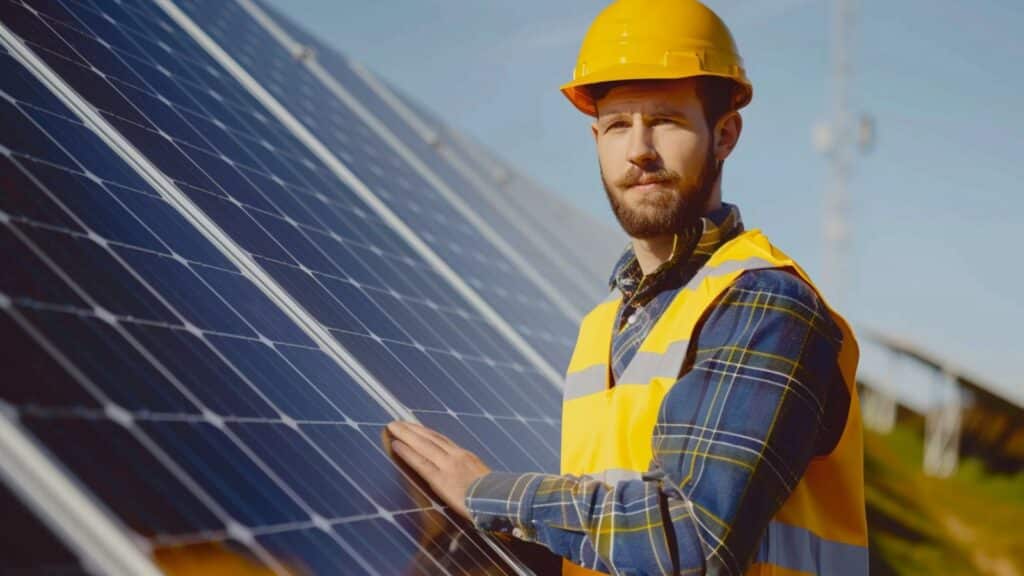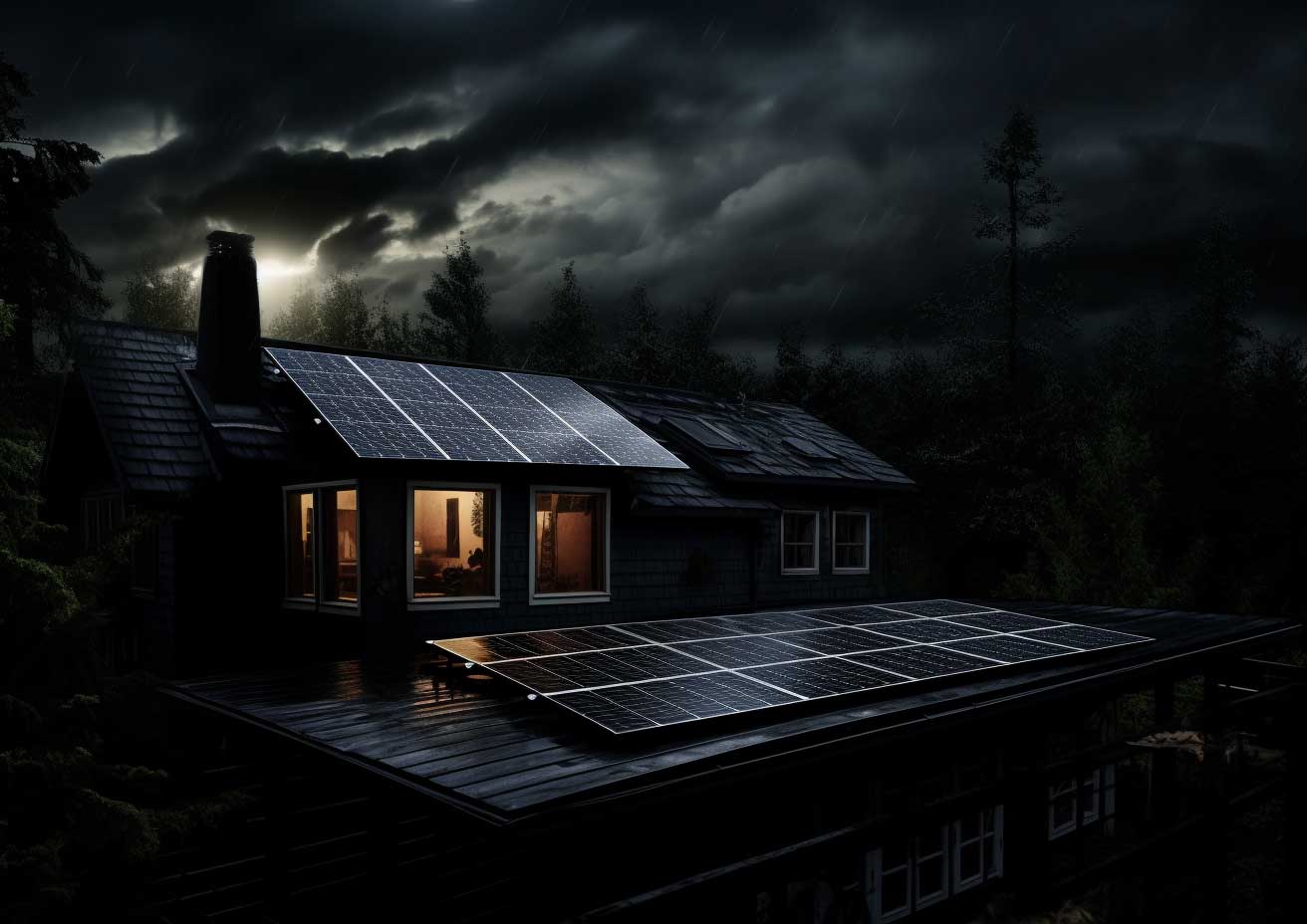Are you considering renewable energy? As the world becomes more aware of the environmental impact of traditional energy sources, the demand for alternatives like solar energy is growing. However, assessing the advantages and drawbacks is crucial to make an informed decision.
In this article, we’ll explore the disadvantages of solar energy, breaking down the potential pitfalls. We understand that as a proponent of renewable energy, you want to consider both sides of the argument. Our goal is to provide a balanced analysis, highlighting the drawbacks of solar energy while recognizing its environmental benefits.
Understanding Solar Energy
Solar energy is a renewable energy source that harnesses the power of sunlight to generate electricity—understanding how solar energy works and its key advantages can help us appreciate its potential while considering its disadvantages. Let’s explore the basics.
Solar energy works through photovoltaic (PV) panels composed of interconnected solar cells. A solar cell comprises semiconductor materials like silicon that convert sunlight into direct current (DC) electricity. An inverter converts the DC electricity into alternating current (AC), suitable for homes and businesses.

There are several advantages to choosing solar energy as an alternative to fossil fuels:
1. Positive Environmental Impact: Solar energy produces electricity without emitting harmful pollutants into the air, avoiding the effects of greenhouse gases. Reducing reliance on fossil fuels can mitigate climate change and improve air quality.
2. Cost Savings: Solar energy can significantly save long-term costs. Solar panels generate electricity, reducing reliance on the grid and lowering monthly electricity bill consumption. Moreover, excess energy produced by your solar system can be fed back into the grid, potentially earning you credits or compensation.
3. Energy Independence: Solar energy provides a degree of energy independence by reducing reliance on traditional energy sources. Solar energy can be harnessed as long as there is access to sunlight, making it a reliable and sustainable energy source.
4. Long Lifespan and Low Maintenance: Solar panels have a long lifespan, often estimated at 30 to 35 years. With minimal maintenance required—typically consisting of cleaning the panels periodically to remove debris—solar energy systems offer a durable and low-maintenance energy solution.
It’s essential to recognize the significant advantages that solar energy brings to the table. Considering solar energy’s potential pitfalls and disadvantages considering these benefits will help us evaluate whether solar energy aligns with our needs and goals.
What Are The Disadvantages of Solar Energy?
As we explore the potential disadvantages of solar energy, it is crucial to address the challenges and limitations of this clean and renewable energy source. While solar energy offers numerous benefits, it is essential to understand and consider its drawbacks to make informed decisions. Let’s dive into the potential pitfalls.
High Initial Costs
Forbes has reported that the cost of an average solar system, which ranges from 6kW to 12kW, can be anywhere between $5,400 and $18,000. However, when you factor in the installation cost, the price range goes up to $6,600 and $22,800. One major drawback of using solar energy is that it requires a significant upfront investment to install the solar panels. The costs usually include the price of the panels, mounting equipment, electrical components, and professional solar installation fees.
It can be difficult for individuals or organizations to deal with the high costs associated with solar panels, especially since multiple panels are often required to fulfill energy requirements. However, it’s worth noting that with technological advancements, the cost of solar panels has decreased over time, making solar energy more affordable and accessible.
Intermittent Energy Production
Solar energy production depends on sunlight, which is subject to intermittent availability. Solar panels generate electricity when exposed to direct sunlight. This poses limitations during cloudy days, at night when the sun is not shining, or in regions with reduced or inconsistent sunlight throughout the year.
To mitigate this challenge, energy storage systems, such as solar batteries, can store excess energy during high production for later use when sunlight is scarce. Implementing effective energy storage solutions is crucial for maintaining a consistent energy supply and maximizing the benefits of solar energy.

Energy Storage and Grid Integration
Integrating intermittent solar energy into existing power grids can also present challenges. Solar energy production can fluctuate, requiring careful management and coordination. Energy storage systems become vital for storing excess energy generated during peak production and utilizing it during periods of low production.
Integrating solar energy into wider power grids requires infrastructure upgrades and modifications. Coordinating the distribution and balancing of solar energy with other sources on a larger scale can pose technical and logistical hurdles.
Environmental Concerns
While solar energy is generally considered environmentally friendly, solar panel production and disposal issues exist. The manufacturing process of solar panels involves using various materials and chemicals, contributing to carbon emissions and potential pollution if not properly managed.
Furthermore, solar panel disposal at the end of its lifespan requires safe and responsible handling to avoid environmental contamination. Solar farms or large-scale installations may also require significant land use, potentially causing habitat disruption or encroachment on natural areas.
Weather Dependency and Geographic Limitations
Solar energy production can be impacted by adverse weather conditions, such as heavy rain or snow, reducing efficiency. Regions with extended periods of inclement weather may face challenges in harnessing solar energy effectively. Additionally, certain geographic locations may have limited access to direct sunlight because of factors like high latitude, shading from surrounding structures, or geographical features.
Understanding these weather dependencies and geographic limitations is crucial when considering the viability of solar energy in different areas.
Mitigating Disadvantages of Solar Energy
While solar energy has disadvantages, ongoing research and innovative solutions aim to address these challenges and improve the viability of solar power as a renewable energy source.
1. Energy Storage Advancements
Researchers and engineers continuously improve energy storage technologies, such as batteries, to enhance the storage capabilities of excess solar energy storage. Companies are developing more efficient and cost-effective battery systems that can store and release large amounts of energy during periods of low sunlight. These advancements in energy storage help maximize the usability and reliability of solar energy.
2. Smart Grid Integration
The integration of solar energy into smart grid systems is gaining momentum. Smart grids use advanced communication and control technologies to manage energy distribution efficiently, optimizing solar energy utilization. By leveraging intelligent systems and algorithms, smart grids can balance energy supply and demand, intelligently routing electricity to meet local needs while minimizing waste and grid instability.

3. Resource Optimization
Scientists and engineers are constantly exploring ways to optimize the use of resources in solar energy systems. This includes improving the efficiency of solar panels, developing new materials that enhance their performance, and exploring innovative panel designs that can capture sunlight from different angles. These advancements aim to maximize energy generation and reduce the overall energy costs per kilowatt-hour of solar power.
4. Sustainable Manufacturing and Recycling
Efforts are underway to make the manufacturing process of solar panels more environmentally friendly. Researchers are exploring sustainable materials and manufacturing techniques that minimize the carbon footprint associated with solar panel production. Developing effective recycling initiatives also ensures that solar panels are responsibly disposed of at the end of their lifespan and their valuable materials are recovered and reused, reducing environmental impact.
5. Hybrid Energy Systems
Combining solar energy with other renewable energy sources, such as wind or hydropower, can help address the intermittent nature of solar power. Hybrid energy systems integrate multiple renewable sources to optimize energy production and improve reliability. These systems can provide a more consistent and continuous clean energy supply by diversifying the energy mix.
By highlighting these advancements and ongoing research, it is clear that scientists, engineers, and innovators are committed to overcoming the disadvantages of solar energy. As technology evolves, solar power systems become more accessible, efficient, and integrated into our energy infrastructure.
Balancing the Benefits and Challenges of Solar Energy
Solar energy has limitations despite its clean and renewable benefits. The initial cost of solar panel installation is high, but it is becoming more accessible as the cost decreases over time. Intermittent energy production is another challenge, but energy storage systems like solar batteries can help. Integrating solar energy into power grids requires infrastructure upgrades and environmental considerations. Weather dependencies and geographic limitations also affect solar energy effectiveness.
However, ongoing research and innovation are addressing these challenges through advancements in energy storage, grid integration, and resource optimization. To make informed decisions, it is essential to recognize the disadvantages and advantages of solar energy in combating climate change and reducing reliance on fossil fuels.




